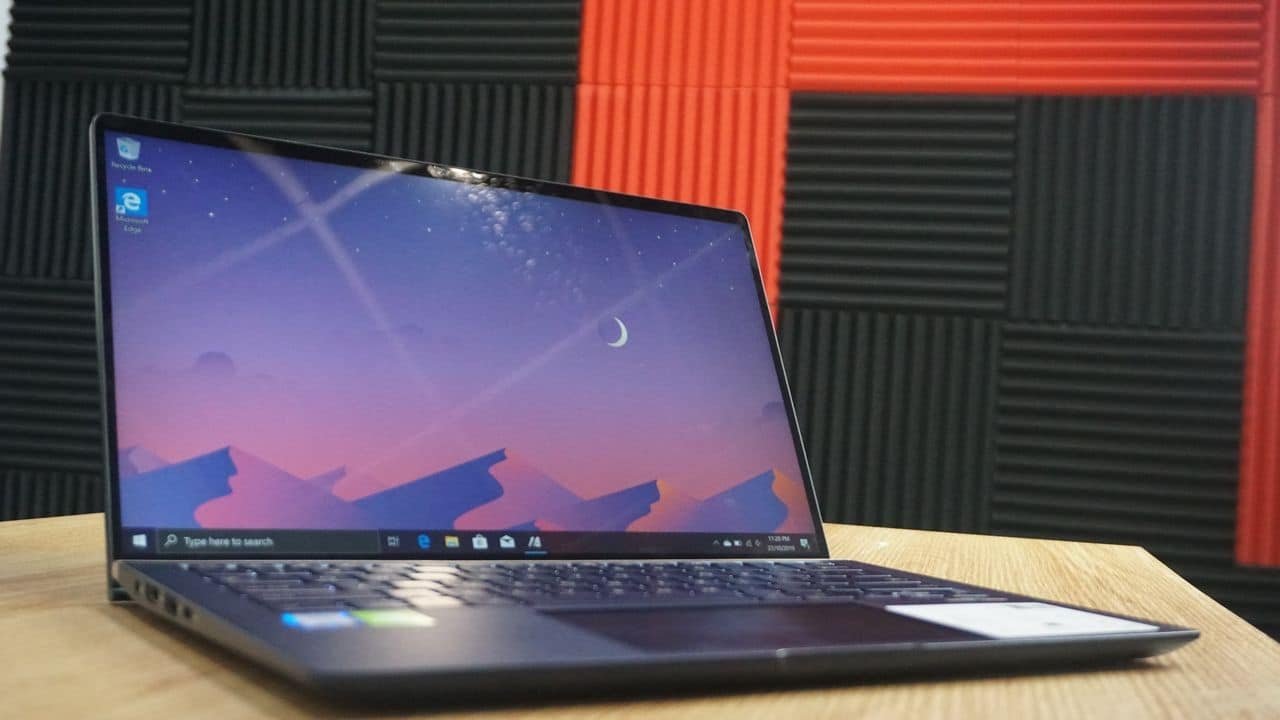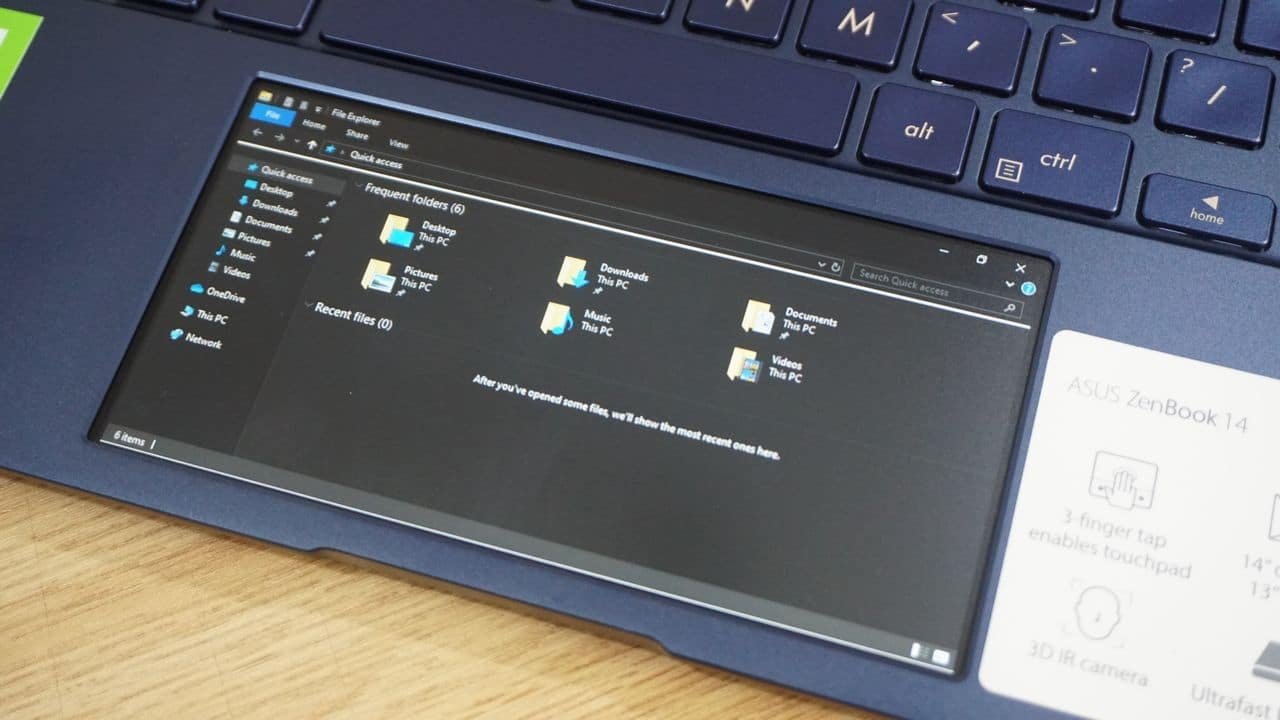
Officially unveiled to the world alongside the ASUS ZenBook Pro Duo back in Computex 2019, the ASUS ZenBook 14 UX434F is basically an improved version of last year’s ZenBook.
One of the biggest design changes of the latest ZenBook range is that they now have the ScreenPad 2.0 that allows the whole trackpad to act as a secondary screen as well as a productivity tool.

| ASUS ZenBook 14 UX434F | |
| CPU | Intel Core i7-8265U, Intel Core i7-8565U |
| GPU | Intel UHD Graphics 620, NVIDIA GeForce MX250 |
| OS | Windows 10 Home, Windows 10 Pro |
| RAM | 8GB, 16GB 2133MHz LPDDR3 |
| Display | 14.0-inch, 1920 x 1080, NanoEdge, 2.9mm side bezel, 3.3mm bottom bezel, Touch or Non-Touch |
| Storage | 256GB/512GB PCIe x2 NVMe SSD, 1TB TB PCIe x4 NVMe SSD |
| I/O Ports | 1x USB 3.1 Gen2 Type-C, 1x USB 3.1 Gen 2 Type-A, 1x USB 2.0, 1x HDMI, 1x MicroSD Card Reader, 1x 3.5mm audio jack, 1x DC-in |
| Connection | WiFi 802.11ac, Dual-Band, Bluetooth 5.0 |
| Weight | 1.26kg |
| Dimensions | 319 x 199 x 16.9mm (WDH) |
| Battery | 50Wh, 30-cell lithium-polymer, 65W Power Adapter |
| Others | Backlit Keyboard, 5.56-inch 2160 x 1080 SuperIPS ScreenPad 2.0, ASUS SonicMaster, 3D IR HD Camera |

While last year’s range of ZenBooks brought us modern notebooks such as the ASUS ZenBook 13 UX333FN, the ASUS ZenBook 14 UX434F and its siblings are refining things further.
The ASUS ZenBook 14 UX434F has most of the elements that makes a ZenBook, well, a ZenBook. The brand’s trademark NanoEdge bezels makes a return allowing the screen to take up more real-estate. The screen is now only enclosed in a 2.9mm side bezel and a 3.3mm bottom bezel.
Aside from the smaller bezels, the notebook comes with a 14.0-inch 1920 x 1080 IPS panel that promises 100% sRGB color gamut and a 178° viewing angle. Depending on the variant, the display can be outfitted with touch screen or not. In this case, however, we did not have touch screen capabilities on our unit.

The notebook that we have comes with an Intel Core i5-8565U but a more powerful variant exists with an Intel Core i7-8265U. The processor is paired with 8GB of LPDDR3 RAM running at 2133MHz.
Although the ASUS ZenBook 14 UX434F does still come with an Intel 8th generation Whiskey Lake processor. It can still match the performance of most notebooks in the market, we would have like to have seen a more updated chip based on Intel’s Ice Lake or Comet Lake architectures.
The GPU on the ASUS ZenBook 14 UX434F has been upgdated to an NVIDIA GeForce MX250 instead of the MX150 GPU from last year. Files are stored in a 512GB NVMe SSD via a PCIe 3.0 x2 bus.

The ASUS ZenBook 14 UX434F is now outfitted with the ScreenPad 2.0. This new revision of the ScreenPad closely resembles the one found on the ASUS ZenBook Pro 15 UX580.

Instead of having a 1920 x 1080 resolution, the 5.6-inch ScreenPad 2.0 now comes with a wider 2160 x 1080 resolution. Surprisingly, the display runs at a 60Hz refresh rate making it viable secondary screen.
One of the biggest draws of the ScreenPad 2.0 is its productivity shortcuts. It can directly control apps such as Spotify and double as a number key since the notebook’s keyboard doesn’t come with a dedicated number pad. The ScreenPad 2.0 can also display a dedicated calculator, check your calendar, and allows handwriting.

ScreenPad 2.0 turned off.
At this time, we haven’t checked how the ScreenPad 2.0 will affect the battery life of the notebook. The first ScreenPad took a significant chunk out of the battery life with the ASUS ZenBook Pro 15 UX580.
ASUS says that battery life should be improved since the ScreenPad 2.0 pulls its processing power from the iGPU instead of the dedicated MX250. We’ll need to do a bit of testing before we find out how much the ScreenPad 2.0 affects battery life.
Although the ScreenPad 2.0 can be considered a gimmick by some, the other parts of the ASUS ZenBook 14 UX434F is a fairly standard affair when it comes to ultrabooks. The whole notebook measures 319 x 199 x 159mm (WDH), which is fitting for a portable ultrabook.

The left-hand side of the notebook is populated by a USB 3.1 Gen2 Type-C, a single USB 3.1 Gen2 Type-A, and the DC-in port.

The right-hand side is a bit less populated only having a 3.5mm audio jack, a USB 2.0 Type-C port, and a MicroSD Card Reader.
Battery is a 50Wh 3-cell lithium polymer battery with a 65W power adapter. ASUS says that the device can last up to 13 hours but as we’ve said, we’ll need to do a bit of testing to see how its main feature (the ScreenPad 2.0) affects battery life.

Aside from the ScreenPad 2.0, the ASUS ZenBook 14 UX434F doesn’t really separate itself from its contemporaries when it comes to sheer performance upgrade. It still sports a Whiskey Lake processor inside that will not be enough to warrant change of notebook.
We’ve only had a short time with the ASUS ZenBook 14 UX434F so it’s still early to call a verdict. We’ll be posting our full review of the device in the coming weeks, so stay tuned.
